Let’s Learn How to Make Baked Feta with Olives & Sundried Tomatoes
You CAN enjoy this recipe for Low FODMAP Baked Feta with Olives & Sundried Tomatoes while following the diet – even the Elimination phase!
Feta Cheese is Low FODMAP
Are you surprised? Many cheeses are actually low FODMAP. Cheddar, Swiss, Brie, mozzarella, Havarti and yes, feta (among others), are considered low FODMAP in certain small portions, most of them in portions of 40 g.
Learn More About Lactose-Free vs. Dairy-Free
We understand the confusion; for years I followed a dairy-free diet and in the end, after a strict Elimination phase and a well-structured Challenge Phase, undertaken with a Registered Dietitian, I learned that I COULD eat dairy, but just needed to watch my intake of high lactose foods.
Read our article, Lactose, Dairy and the Low FODMAP Diet for a fuller explanation.
Choose Your Dairy Source
Feta can be found made from cow’s milk, sheep’s milk, goats’ milk and even sometimes a blend of milks.
I am partial to sheep’s milk feta, but you can choose the kind that you like. Use one that you like the taste of when sampled plain. I like feta with a middle-of-the-road saltiness.
Also, for any baked feta dish, a creamier feta works very well.
For this Baked Feta with Olives & Sundried Tomatoes recipe it is okay if you use one that is crumbly, as you will be crumbling it anyway!
Try our Low FODMAP Baked Feta with Honey, Walnuts & Thyme as well.
Let’s Make Baked Feta with Olives & Sundried Tomatoes!
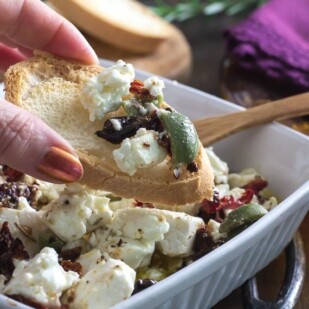
Low FODMAP Baked Feta with Olives & Sundried Tomatoes
Our Low FODMAP Baked Feta with Olives & Sundried Tomatoes is incredibly easy to make and is a lovely appetizer or snack - and simple enough to make for yourself! No guests required!
Ingredients:
- 8 ounces (225 g) feta cheese
- 5, (20 g) moist sundried tomatoes, chopped
- 6 pitted green olives, such as Castelvetrano, chopped
- 6 pitted black olives, such as Kalamata, chopped
- 1/4 teaspoon dried rosemary, crushed
- Pinch red pepper flakes
- Freshly ground black pepper
- 1 1/2 tablespoons Garlic-Infused Oil made with olive oil, or purchased equivalent
Preparation:
-
Position rack in middle of oven. Preheat oven to 400°F/200°C.
-
Crumble the feta into a small ovenproof dish. Add the sundried tomatoes, olives, rosemary, red pepper flakes and season with pepper. Stir together gently just until mixed. Drizzle with olive oil and give a few more stirs to just combine.
-
Bake for about 10 minutes or until the cheese is hot and softened. Serve immediately with crackers or bread.
Notes:
Tips
- Feta can be somewhat salty, kind of salty or VERY salty. Depending on the one you buy you might have to adjust the seasoning.
Nutrition
All nutritional information is based on third-party calculations and should be considered estimates. Actual nutritional content will vary with brands used, measuring methods, portion sizes and more. For a more detailed explanation, please read our article Understanding The Nutrition Panel Within Our Recipes.

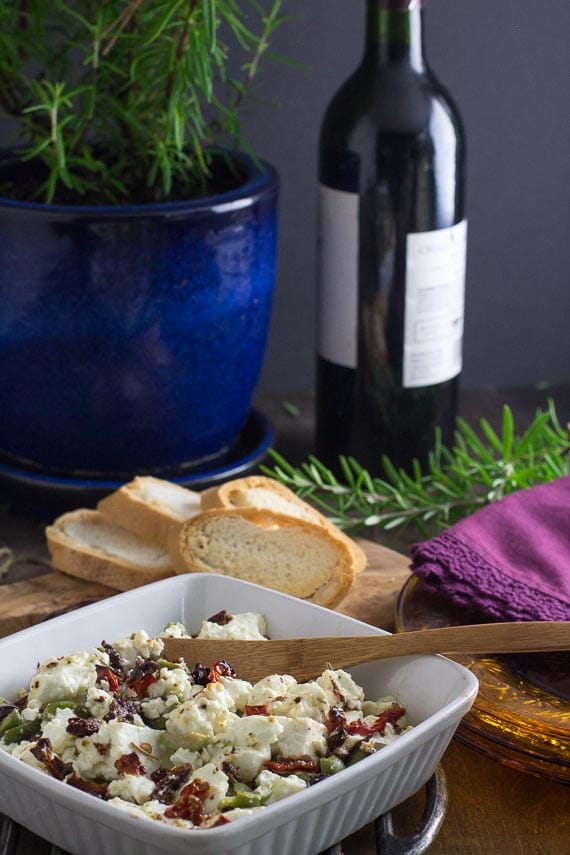
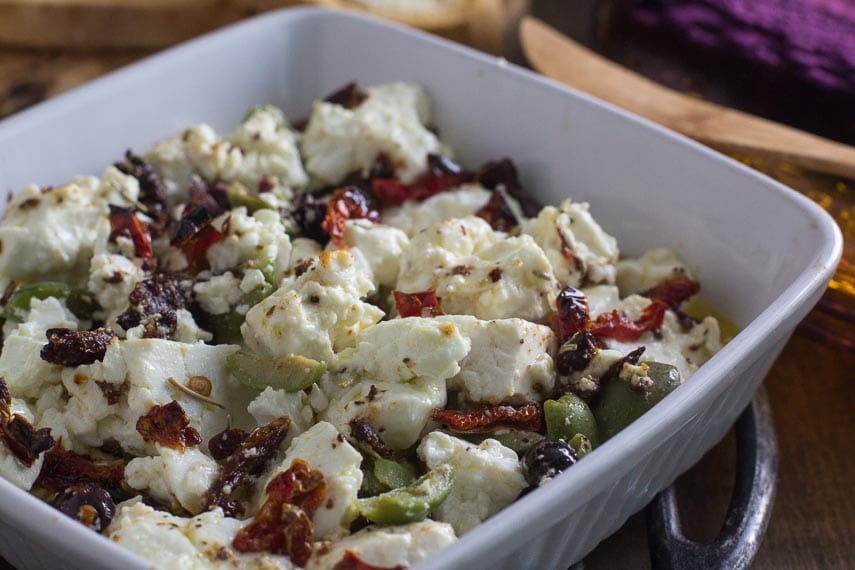
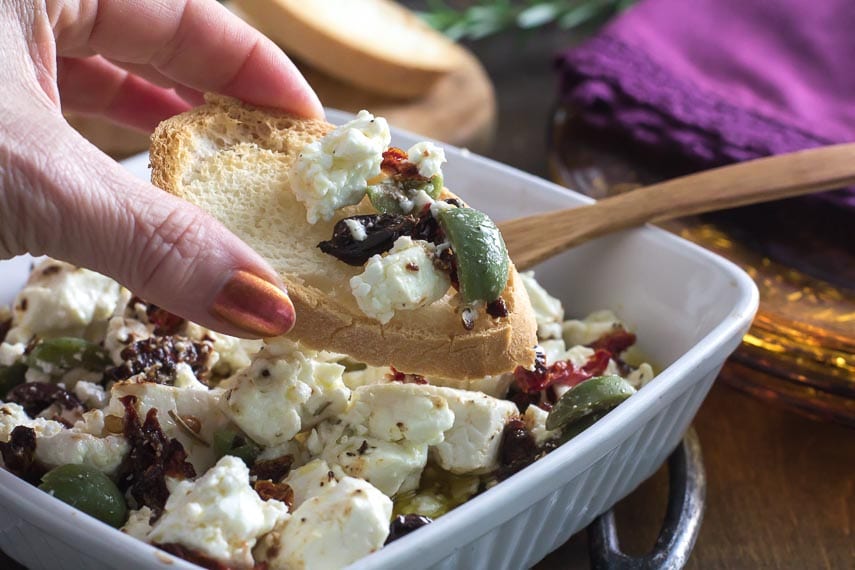

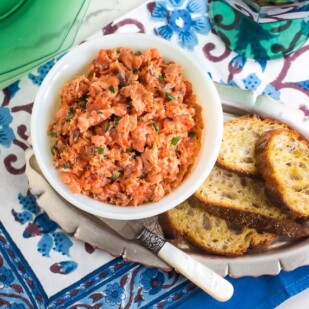



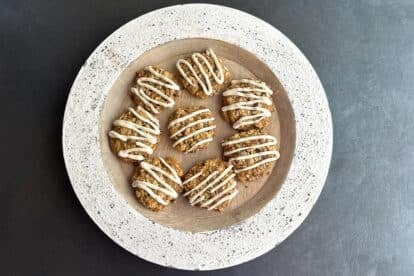


Low fodmap lamb & feta burgers
2 slices day old sourdough bread (no crusts). 500g minced lamb
1 tbsp onion infused oil (to taste). 1 tsp ground allspice, 3tbsp chopped parsley, 160g feta, 1 tbsp oil, mint leaves and sourdough rolls to serve. Low FM salsa
Cut bread into cubes and soak a few mins, squeeze out
Mix with all other ingredients (not rolls, mint leaves or feta)
Divide into 4. Form into patties and place 40g feta (piece) in middle
Cover with wrap and refrigerate 1 hour.
Cook over med heat. 10 mins turning once (more if very thick)
Serve on split rolls ( can brush w garlic oil) add mint leaves and low FM salsa
Mandy, sounds like you are cooking up delicious low FODMAP food! This is the kind of creativity that we like to share on the site and these lamb burgers sound fabulous! Quick, too.
Saw this recipe today and just had to make it for my lunch as I had all the ingredients! Yummy! Thank you.
Thank you for taking the time to let us – and others – know! It is so easy, and once you know the diet, easy to tweak as well.
Can this be reheated the next day?
I would make it ahead and NOT heat it – Then heat when needed. If you are asking if leftovers can be heated again…they could, but it would not be nearly as good. It will most likely dry out.